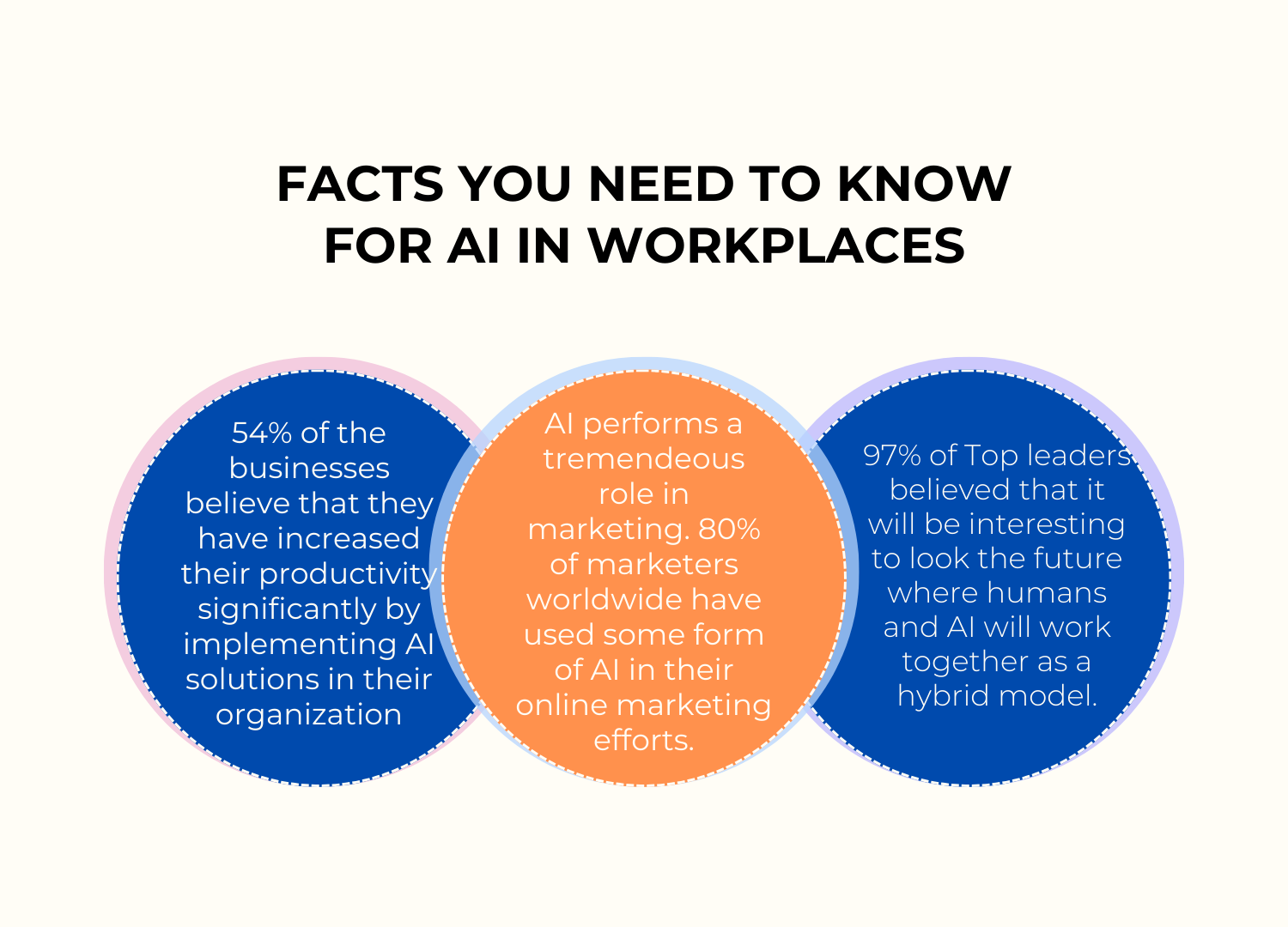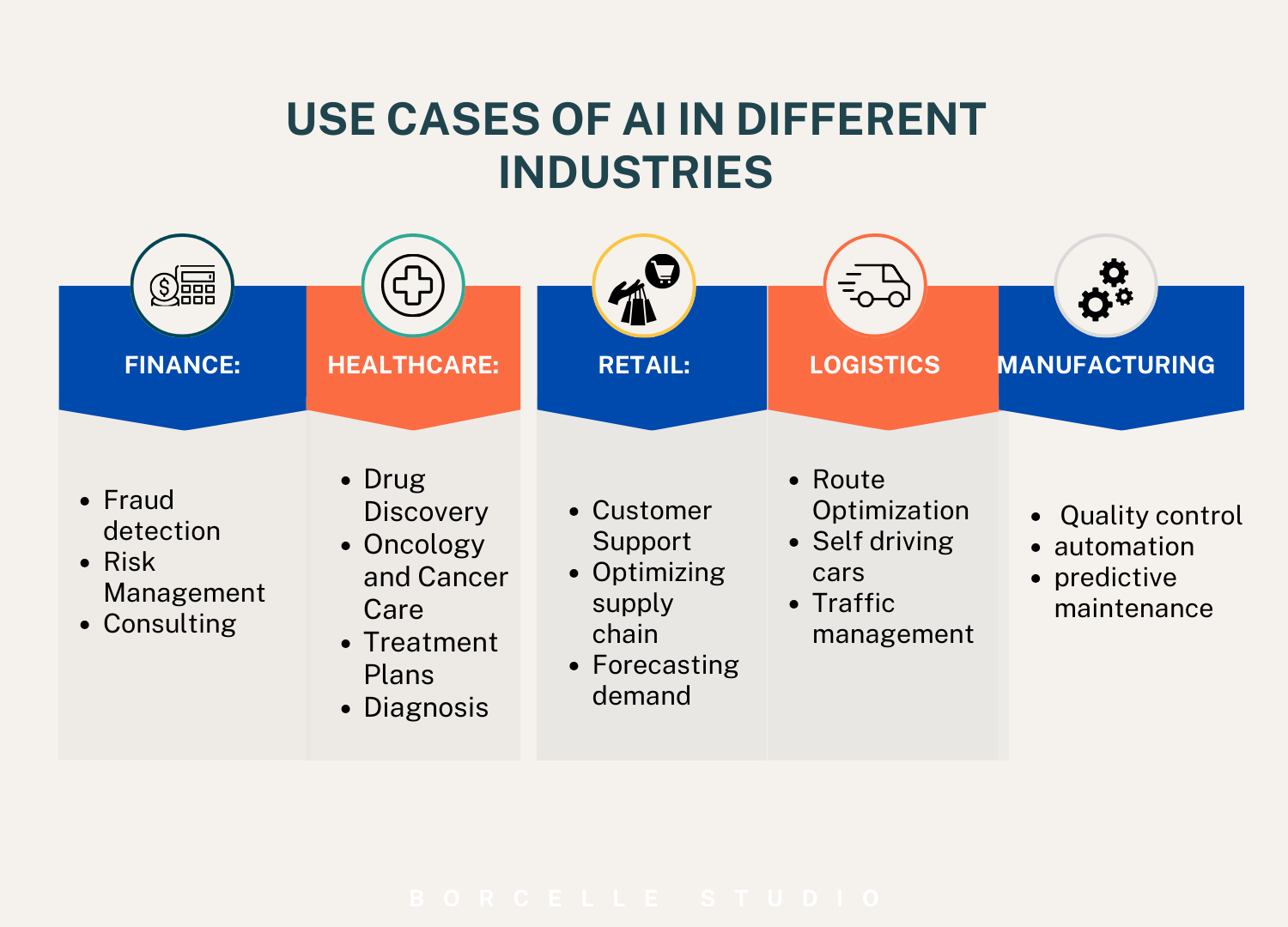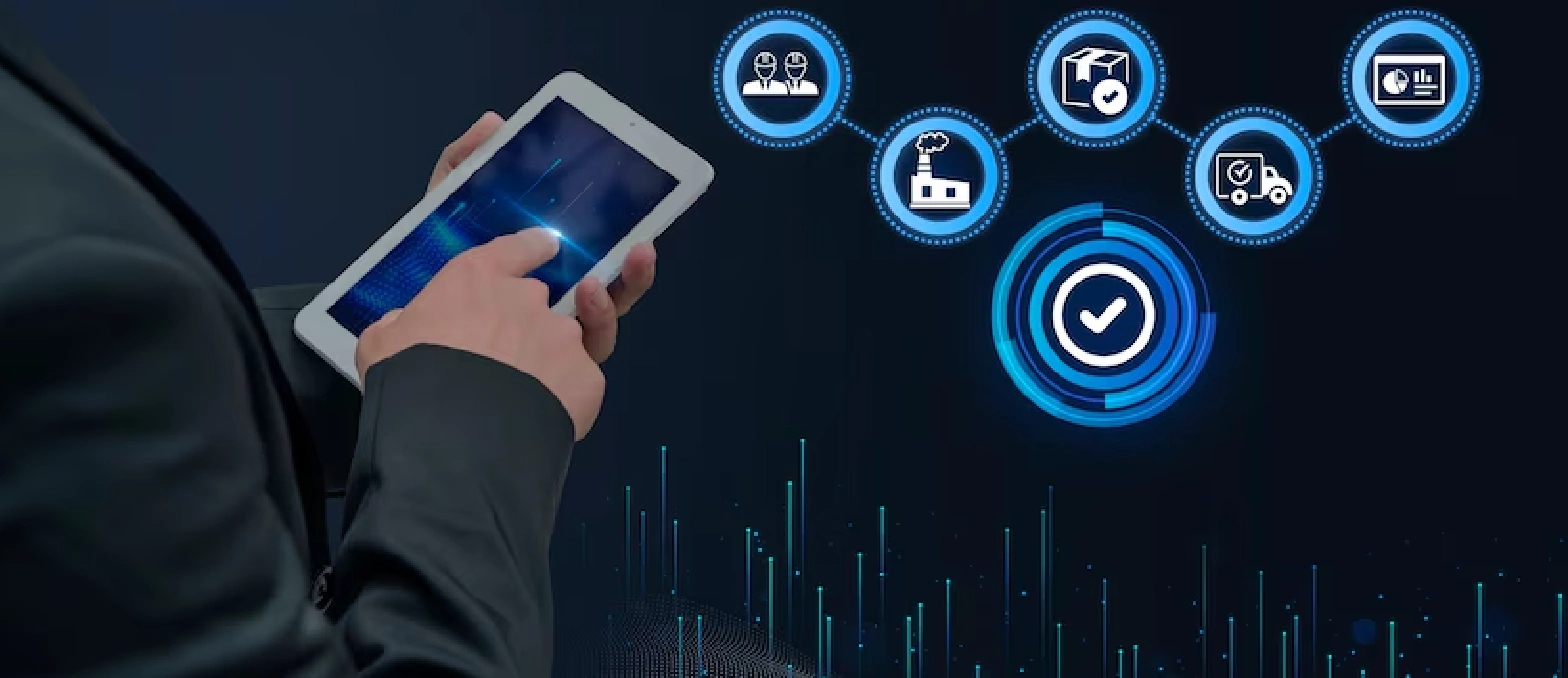Table of Contents
AI development has been at the center stage for several years, but now we’re witnessing times when it has finally come into action, in our daily lives. It has been the sort of technological development that no one could exactly predict, or at least the scale of it. According to the forecast by MarketsandMarkets, “The global AI market is anticipated to grow exponentially, from $1.345 trillion to $1.8 trillion by 2030″. The applications of AI have become an integral part of our lives making everything easy and convenient. Even though the benefits of AI are vast, the future of AI is still uncertain. The challenges in implementing AI also bring potential downsides that need careful attention.
While we are busy estimating the impact of AI on businesses and its penetration in our lives 10 years down the line, programmers are busy making new developments in the field. Artificial intelligence development has now come to a point where it covers almost everything from search patterns and food ordering habits to shop preferences.
AI and Emerging Workforces
How is AI going to impact the workforce? Will it replace jobs? There have been many critical questions surrounding the rise of AI in the workforce. With the technological advancements in this domain, so much of manual work is being eradicated through automation. AI is being preferred across the globe because it’s quick, and easy and promotes cost savings for businesses regardless of the industry. Furthermore, it has started indicating that human efforts might be brought down to a level where they might not be required anymore. The key is to develop a skill set that will complement the AI capabilities.

Understanding AI
To be simply defined, AI is the creation of intelligent systems that possess the capabilities displayed by humans. AI is programmed to behave very similarly to human intellect, it has a memory and learns from initial errors to improve the existing level of knowledge. The capabilities of AI include problem-solving, learning, and decision-making. AI development is a broad term that highlights all the technological advancements in the information technology industry. Companies consult with top Artificial intelligence development companies to provide solutions for issues that range from routine to very complex levels.
How is the development of AI concerning?
AI (Artificial Intelligence) is rapidly transforming how businesses across the globe operate, through its automation functionalities. It is gradually becoming a significant contributor to the industrial and economic progress of nations. It also seems to be very closely involved with boosting the research and development associated with medical science as well as climate change.
Now, just because AI development is powerful, we cannot say for sure that it will instantly replace the workforce. It is still not quite there yet in a lot of ways. We can say that this phase would be a very strong indicator of whether AI in companies would replace, complement, or go beyond human capabilities. In the process, several job roles will go down, some will pick up the pace, while a few others may witness an absolute change in the way they’ve been carried out so far. Workers will have to scale up and learn new skills to stay on par with the constantly growing impact of Artificial intelligence companies and ML services at the workplace. There may even arise a need to leave behind the vanishing fields and embrace the latest trends in the job market.
How do Automation and AI in companies benefit their business?
Even while automation and artificial intelligence (AI) aren’t exactly brand-new, current breakthroughs in technology are expanding the capabilities of computers. According to studies, society as a whole requires these breakthroughs to boost establishments, promote economic expansion, and make previously unimaginable strides toward solving several of our biggest and most pressing global issues.
1) Swift progress in science and technology
The latest versions of strengthened automation from an Artificial intelligence development company are emerging in applications that vary from autonomous cars on streets to automated checkouts in supermarkets, transcending conventional manufacturing automation and enhanced machines. Innovations in techniques and elements, particularly structure, detectors, and software, thereby have been largely responsible for this success.
AI development has taken especially noteworthy initiatives in the past few years. Amazing developments are going viral, many of which involve extraordinary abilities in artificial intelligence, language processing, and challenging games like Pokémon Go.
2) Transformational Potential
Corporations from all industries utilize these technologies in a variety of operations to personalize ideas for products, spot manufacturing irregularities as well as unauthorized transactions, and several other things. These modern innovations already contribute to value in a variety of services and products. The most recent AI innovations, which include methods for dealing with categorization, prediction, and grouping complications, offer additional advantages. The use of AI development and automation techniques may significantly boost the world’s finances as well as the worldwide economy.
3) Potential to help tackle several societal moonshot challenges
Furthermore, Artificial intelligence development companies are contributing to fields including climate modeling, healthcare research, as well as the study of the material. Using modern technology in these as well as other fields would potentially address some of the most pressing issues faced by society. For instance, some medical research organizations have developed algorithms through AI which have helped significantly in reducing the time required for the diagnosis of diseases. AI is also giving hope by diagnosing and treating cancer.
4) Beneficial even in the developmental phase
The application of AI in companies is still not as efficient as we’d want it to be. The ability of companies to adopt these kinds of technologies presents an entirely distinct challenge. It is difficult for people to adopt AI due to accessibility to data, advances in technology, and process awareness. But even then, it succeeds in pushing through the limits of amazement. The more information we feed to AI, the more advanced it gets. The latest trends in AI and machine learning solutions have already started addressing such issues to unleash the true potential of AI. For instance, ensuring the rationale behind what AI does and how it achieves it, training related issues, security measures as well and protocols for processes meant for financial organizations.
Dive Into AI Excellence and Unlock New Possibilities
What kind of an impact will Artificial Intelligence and automation have on the workforce in the future?
Even though artificial intelligence (AI) and automation have positive effects on the economy as well as society, we must continue to be prepared to deal with major transformations in our work environments.
1) A majority of manual jobs could be lost to automation by introducing AI in companies
Reports indicate that approximately 2500 types of work spread across 900 domains are very prone to surrender to the automation wave. They consist of physical tasks performed in extremely organized and foreseeable surroundings, in addition to collecting information and interpretation. About half of the activity performed by humans, throughout all industries, is comprised of these. Supervising other people, delivering knowledge, and interacting with interested parties are among those who are the least vulnerable professions.
AI development will have an impact on almost all jobs. As per the report by the World Economic Forum,” it is estimated that AI will create 97 million new jobs by 2025 while displacing 85 million”.
2) Some Jobs will experience large drops
Some workers will be replaced by automation. According to the findings, between 2023 and 2035, automation could take over nearly 300 million jobs, or about 20 percent of the world’s employment. In terms of forecasting the timeline and magnitude of implementation, this corresponds to a midway assumption. This percentage strengthens to 25%, or 400 million occupations, in the quickest situation we have considered. Only 20 million people in general, or almost zero percent of the workforce worldwide, will be uprooted in the weakest adoption circumstance.
The broad range emphasizes the variety of factors that are going to impact the rate and magnitude of the acceptance of automation and AI development. Automation’s technical viability is merely one concerning aspect. The financial implications of its implementation, labor marketplace movements, including the amount, effectiveness, and wages of the supply of workers, advantages transcending labor replacement which encourages commercial justifications for acceptance, as well as cultural standards and tolerance are other factors to take into account. Due to the variations in all of the variables above, the impact of services from Artificial intelligence development companies is expected to fluctuate considerably across nations and business sectors, particularly in terms of labor market relationships. In technologically advanced nations with comparatively elevated earnings, like Japan, France, and the US, for example, automation might substitute for 25 to 30% of the workforce by 2035, which is over two times the rate in India.
3) Creation of new jobs
The need for labor will increase, which will lead to more employment being created even as workers get uprooted. With the help of several demand-inducing factors, such as wage increases, rising healthcare costs, and continued expenditure on building materials, power, and technological research and implementation, we can assume forecasts for demand for labor as long as 2035.
According to research, there will be an increase in the need for labor between 25-35% of the workforce worldwide (560-900 million jobs) by 2035, more than maintaining the total amount of jobs eliminated. The economies of emerging nations like India, where the employed population continues to grow effortlessly, are going to experience some of the strongest benefits.
Jobs are going to continue being generated as a result of the continued incorporation of AI in companies, including corporate competitiveness and enhanced output improvements. Several additional new professions that many of us cannot presently anticipate are also going to develop and may represent upwards of 15% of additional employment opportunities brought about by 2035. Furthermore, traditionally, technology has proven to be an overall employment producer. As an illustration, the emergence of computers for personal use during the 70s and 80s led to the creation of thousands of job opportunities such as data analysts, customer support representatives, and a variety of programmers and application designers, in addition to semiconductor manufacturers.
4) A wave of change in existing roles
As Artificial intelligence development companies supplement the labor of humans in work environments, more jobs are going to be altered in comparison to those that will be eliminated or obtained. The prevalence of limited automation will increase as automated machines substitute certain types of human labor. Medical professionals will be assisted in diagnosing issues with patients and choosing the best course of therapy by artificial intelligence (AI) algorithms, which, for instance, are capable of understanding scans for diagnosis with an exceptionally high level of preciseness. Jobs with monotonous duties in other business sectors could make the switch to the concept that involves overseeing and fixing systems that are automated.

What are the primary workforce problems and shifts?
By the majority of the possible situations that tell, it can be assumed that there will be a sufficient workforce to guarantee full-time employment in 2035, but the changes brought on by the deployment of automation and AI in companies, are going to be profoundly important. Along with changing skills as well as educational demands, the arrangement of occupations is also going to shift. To make sure that humans and AI collaborate as effectively as possible, employment is going to need to be completely reconstructed.
1) The need to acquire new skills
Automation will accelerate the transformation in workforce abilities that has been occurring over the past decade. The requirement for highly specialized abilities like high-order psychological, social, and intellectual skills will rise. Skills like imaginative thinking, analytical skills, and sophisticated processing of information will also see a boom. The demand for AI developers has been rising, and this tendency will only intensify. Although the requirement for both physical and mechanical abilities will decrease, it will still be the most important aspect of labor skills in several countries in 2035.
2) The workforce may require an occupational switch
In an equilibrium instance of the incorporation of AI in companies, according to research, 5% of the world’s workforce will be required to change into different occupations by 2035, whereas possibilities can range from 0-20%.
While many of these changes will occur across industries and even countries, some will take place within specific businesses and industries. There will be a drop in jobs involving manual labor in extremely organized settings or in processing information or accumulating it. Supervisors, who perform tasks that are difficult to automate, and blue-collared professionals, who work in physically uncertain surroundings, will both experience growth in their respective fields. Professors, staff nurses, computer professionals, and numerous other occupations are all going to encounter an upsurge in requests for labor shortly.
3) Increased alignment with machines will cause workflows to shift.
Workflows, as well as environments, are going to keep evolving as the penetration of artificially intelligent software and gadgets produced by Artificial intelligence development companies become more deeply incorporated into work environments, making it possible for humans as well as technology to work alongside one another. For instance, if self-checkout equipment is implemented in retail outlets, tellers can transition into checkout support assistants who are capable of helping with inquiries or system troubleshooting. Every aspect of the workflow and environment will need to be rethought as a result of further system-wide alternatives.
4) Burdensome circulation of regular wages due to Automation
The changes in the employment mixture will undoubtedly place pressure on wages.
- Several of the mid-wage occupations that are currently available in developed countries are being replaced by highly automated professions like production or auditing. They are expected to eventually disappear.
- Although there is going to be a major increase in lucrative employment opportunities due to the integration of AI in companies, particularly for professionals with advanced degrees in healthcare, engineering, or other sectors.
- Many of the new occupations that have been anticipated to be developed, like those involving educators and caregivers, frequently feature lower compensation levels.
- Automation runs the risk of escalating the wage disparity, inequality of earnings, and lack of revenue growth that have plagued nations with advanced economies over the prior decade and ignited political as well as social disagreements.
5) Existing workforce-related problems
The majority of nations already struggle to appropriately train and equip the workforce to satisfy the demands made by employers today. Over the past 20 years, the investment in AI training and education has been minimal. Assistance for job transition and relocation expenses have also decreased as time went on. According to the majority of assessments, these problems will certainly worsen in scope over the coming decades.
What are the benefits of AI in companies and workforces?
1) AI doesn’t believe in the biased selection of resources
Although artificial intelligence services are unlikely to completely replace resources, they may be able to shed light on unintentional prejudice in hiring techniques. It can do so by unmasking the bias or doing a standardized evaluation for assessing candidates.
2) Automation of tasks saves a lot of time
There are some things that Artificial Intelligence can complete with greater speed and effectiveness compared to humans. However, AI solution providers carry the capability to free up time spent by humans on other duties instead of entirely substituting them. For example, AI voice assistant systems like ‘Alexa‘ or “Cortana” have evolved into our own customized virtual personal assistants.
Real-time responses to user questions and demands are provided by artificial intelligence (AI) tools. They also strive to grow more sophisticated every day by regularly upgrading and renewing the information they know regarding their users. Human workers may concentrate on more imaginative tasks because Artificial intelligence companies can assist them in organizing meetings, providing solutions to problems, and composing their routine lists. Perhaps AI continues to catch up in more complicated fields.
For experts, the ability of AI technology to handle skilled responsibilities saves a tremendous amount of time and frees them up to concentrate on comprehending the final product that AI produces. Experts will devote a greater amount of time to understanding why AI takes certain judgments and the best way to respond to them instead of wasting additional time learning how to translate papers. The inclusion of people doesn’t come as a result of this automation. Although AI in companies is capable of analyzing legal documents, the program cannot interestingly explain its decision-making process. Humans will be required in this situation.
3) Combined effort of AI and humans
Organizations that simply rely on artificial intelligence development services to streamline operations and utilize it as a substitute for employees would see only temporary gains. This is because they lack sharp emotional intelligence and innovative thinking abilities.
To successfully achieve enhanced Intelligence, the use of deep learning and machine learning must be to complement human intelligence. It will be profitable for businesses to collaborate on Artificial Intelligence with humans in the future. AI is there to enhance human capability not to eliminate them.
The next generation’s work environment is going to include human-AI conjunction and coexistence, and enhanced intelligence will soon become the accepted standard.
4) AI will create brand-new jobs
- By 2025, AI will generate at least 12 million more job opportunities than it eliminates.
- Data engineers and specialists, professionals in machine learning and artificial intelligence, and masters in digital advertising and marketing planning, among several others, are all going to see an upsurge in popularity.
AI is a powerful tool that frees up human attention. AI automates routine tasks providing us the opportunity to focus on our strategic and commercial capabilities. To say that AI will eliminate jobs is not entirely correct. Professionals can survive In this landscape by grabbing skills like critical thinking. and problem-solving
How to ensure harmony between AI growth and the human workforce?
Trying to slow down or reverse the spread of technological advances while we look for the best solutions and regulations to deal with these kinds of problems, won’t get us anywhere. To gain from higher output and efficiency gains in addition to community benefits, both private and public sectors should balance the growth of AI development. The following measures could ensure the aforementioned:
- Guaranteeing strong productivity and growth in the economy.
- Encouraging innovation in business.
- Transforming educational environments and preparing students for modern workplaces.
- Putting money into human capital.
- Enhancing the dynamic nature of the work market.
- Developing new employment opportunities
- Going through the revenue generation models
- Reevaluating protection mechanisms and transition assistance for impacted employees.
- Making investments in factors that influence labor demand.
- Implementing automation and artificial intelligence (AI) securely.
Summary:
Promising opportunities await AI development and automation in the future. However, working conditions will certainly not be the same. The jobs of tomorrow will demand innovative skillsets and a level of adaptability beyond what we’ve seen previously. Therefore, people must understand and take steps to develop the skills of the future.
It is equally essential for the workplace to equip themselves for the upcoming changes. It includes collaborating with the government, businesses, and educational institutions for upskilling and re-skilling initiatives. Also, corporations must invest in lifelong learning programs. Focussing on the synergy between human and AI collaboration will certainly benefit the enterprises to witness the positive transformation it will bring.
Increased Productivity, Greater Prosperity & Much More With AI
FAQs
How will the introduction of AI in companies eventually replace humans?
Most likely not. At present, only 30% of work in 65% of the total professions is compatible with automation. However, it is crucial to build the skill set to survive in an AI-powered world.
What are the tasks that AI can do better than humans?
Artificial Intelligence specializes in analyzing information, performing routine operations with accurate computations, and forecasting outcomes. This affects a variety of occupations, including those of doctors, accountants, teachers, medical staff nurses, and many others. AI, however, falls short of humans in professions that involve imagination and sensitivity.
How AI and Humans can collaborate?
AI comes into the picture when human capabilities start declining. But, AI is still in its developmental stage. Professional skills that require human interaction seem difficult for AI. So even if AI transforms several occupations in the future, it’d still need humans to keep it running.






